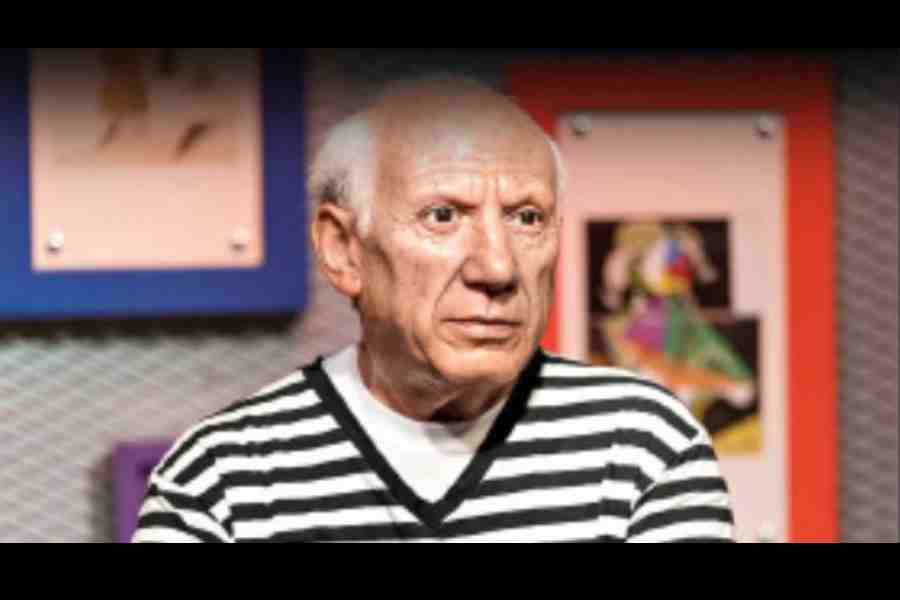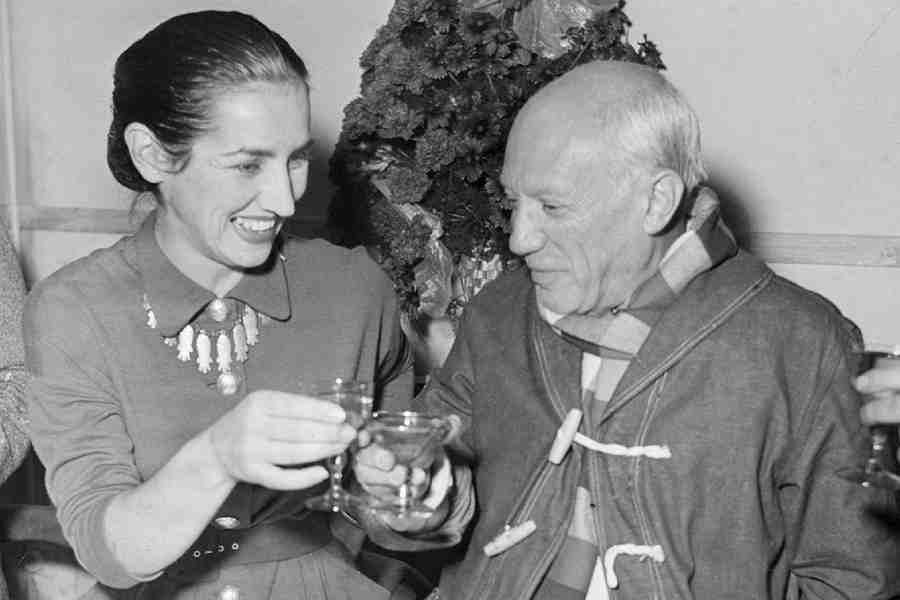The Picasso fell off the proverbial truck. It vanished from a loading dock at Logan International Airport in Boston and wound up where it didn’t belong, in the modest home of one Merrill Rummel, also known as Bill.
In fairness, this forklift operator had no idea that the crate he had tossed into his car trunk contained a Picasso until he opened its casing. In fairness, he didn’t care much for it; he preferred realism.
But now things had turned all too real. FBI agents were hot on the trail of a hot Picasso unavailable for public viewing, as it was hidden in Rummel’s hallway closet. He and his fiancée, Sam, began to panic.
“How do we get rid of it?” she recalled thinking. “We couldn’t just give it back. It was a pain in our butt.”
Fortunately, Rummel knew a guy. Someone particularly skilled at making problems melt away. A fixer.
He dialled a number he knew by heart.
The Case of the Missing Picasso, revealed here for the first time, goes back. Back before the much more notorious theft of 13 works of art from Boston’s Isabella Stewart Gardner Museum in 1990. Back, in a sense, to a time before Picasso had even painted the piece in question.
Back to the 1950s of Waterville, Maine, where the Rummel boys — Bill and his younger brother, Whit — were testing their hometown’s Yankee forbearance. If one was looting parking meters for his coin collection, the other was pilfering pens from Woolworth’s. If one was stealing radios from junked cars, the other was racing his car so recklessly that it seemed destined for the junkyard.
But their father, Whitcomb Rummel Sr, always managed to calm the aggravated constabulary with assurances that he would handle it. And he did: When 12-year-old Whit — known in the family as “Half-Whit” — was caught stealing from Woolworth’s, his father forbade him from entering any shop for a year.
“Not even into the corner store for a Coke,” the son, now 76, recalled. “This meant my mother had to bring clothes out to the car so I could try on pants because I couldn’t go into the store.”
Neither son dared to cross their father.
Rummel the elder had done some acting, married, served with the Navy Seabees in Africa during World War II and moved to Waterville, where he bought and spiffed up a local ice cream stand. His frozen treats became a favoured local delight.
To Waterville’s relief, the Rummel boys moved on. Whit went to Tulane University in New Orleans. Bill served with the Coast Guard in Michigan, where he fell in love with a bowling-alley bartender whose customers called out “Play it again, Sam” so often that her given name, Evelyn, became a gutter ball.
When his Coast Guard hitch ended in 1968, Bill joined Emery Air Freight, then the country’s largest cargo airline. He worked nights on the company’s loading dock at Logan airport, where, in early 1969, a crate arrived from Paris.
Inside, a Picasso: Portrait of a Woman and a Musketeer.
Pablo Picasso, then in his late 80s, had become intrigued by the musketeer as evocative of the old masters, especially Rembrandt, and returned to the theme again and again.
The painting, completed in 1967, was to be forwarded from Boston to a Milwaukee gallery owned by Irving Luntz. His son, Holden Luntz, recalled that his late father had bought the piece from Daniel-Henry Kahnweiler, a prominent dealer in Paris known for championing Picasso. Since the negotiations took place on his father’s 40th birthday, he said, Kahnweiler agreed to sell the work for $40,000.
“A gesture of generosity,” said Holden Luntz.
But the Picasso never made it to Milwaukee. An anxious Irving Luntz contacted Emery to complain, but the cargo company had its own emerging problem, with what came to be known in New England as the 100-hour storm.
The protracted late February snowfall paralysed Boston, including the airport. Large containers littered the tarmac, while boxes and packages clogged the docks.
“Our dock was a mess,” Bill Rummel said in a 2007 interview with Ira Glass for an ultimately shelved episode of a radio programme.
With outbound crates at the front and inbound crates at the back, Emery executives demanded a decluttering of the dock. Under pressure, Rummel said, his supervisor pointed to a crate with a missing label and said: Take that with you when you go home tonight.
It should be noted that, according to Rummel, this supervisor was later fired. For stealing.
Rummel angled the crate into the trunk of his 1962 Chevy Impala and, a few days later, lugged it into his half of a two-storey home in Medford, Massachusetts. He pried it open with a hammer to discover that he was now in possession of a Picasso.
Its artistry underwhelmed him, he told Glass.
Rummel called his fiancée, Sam. “You’ll never guess what I’ve got,” Sam, now 79, recalled him saying. “A Picasso!”
“What are you, drunk?” she asked.
The couple hid the crate in the closet beneath the stairwell.
“We shoved that thing so far back there, and then shoved stuff in front of it,” Sam Rummel said. “We never talked about it.”
But someone was talking about it: Irving Luntz, the Milwaukee gallery owner. After weeks of being Picasso-less, he contacted the FBI, which began snooping around Logan. This unnerved a certain affianced couple in Medford.
“Worried? Are you kidding?” Sam said. “We were young. We didn’t want to go to jail.”
Unsure of what to do, Bill Rummel called his brother, Whit, who was more knowledgeable about art. He had once torn a photograph of a Picasso out of a library book to hang in his bedroom.
In effect, Whit’s first question was: Have you called the fixer?
Of course. Dad.
The elder Rummel listened to his older son’s predicament and then offered two options with all the calm of a soda jerk asking: whipped cream or hot fudge?
1. They could bury the Picasso in the foundation of a Waterville restaurant under renovation that his father co-owned. (Its name, The Silent Woman, seemed apropos.) Unearth the painting in 30 years and maybe sell it for a small fortune.
Or:
2. Return it.
When Bill asked his father what he thought he should do, the elder Rummel said that this was a life choice he had to make for himself.
“So I said, ‘I’ll give it back,’” the son told Glass. “And he said, ‘I’ll help you.’”
The elder Rummel telephoned Whit in New Orleans and gave him detailed instructions for a handwritten note that could not be traced. Use high-end stationery. Since you’re left-handed, write it out with your right hand. Then send it by airmail to your brother in Medford.
The FBI was turning up the heat, issuing a bulletin to law-enforcement agencies throughout the Northeast.
Days later, the ice cream king of Waterville arrived in Medford with his wife, Ann, a new trench coat, and a plan. He rubbed the painting’s packaging and crate with Vaseline, for reasons that evaded his son.
He attached the handwritten note. He donned the trench coat, a brimmed hat, and gloves. Go time.
Three years after this escapade, Whitcomb Rummel would die, suddenly, at 63; in his honour, his restaurant would stay closed until the evening ice cream rush.
His son Bill would spend the next 30 years with Emery, rising to regional manager before retiring to South Carolina and dying, at 71, in 2015.
But on this April Fools’ Day in Boston, 1969, father and son were sharing an unforgettable moment: loading a purloined Picasso into a Chevy Impala.
Bill Rummel, wearing a black watch cap and sunglasses, drove them into Boston. His father got out and carried the crate a few car lengths ahead.
The elder Rummel loaded the painting into a taxi, handed the driver a $20 bill and told him to deliver the package to the Museum of Fine Arts, just down the avenue. He returned to his son’s car and, on the drive back to Medford, tossed the coat, hat and gloves in separate garbage cans.
Newswire services were soon circulating photographs of Perry T. Rathbone, the museum’s esteemed director, posing with both the recovered Picasso, worth an estimated $75,000, and a mysterious handwritten note, which read:
“Please accept this to replace in part some of the paintings removed from museums thruout the country.”
It was signed “Robbin’ Hood”.
Luntz, the Milwaukee gallery owner, told a television station that he was “absolutely delirious and delighted to get this painting back”. And yes, he said, prospective buyers were lining up.
A few days later, on the Emery loading dock at Logan, Bill Rummel’s boss called him over and motioned to a certain crate in the middle of the floor, bound for Milwaukee.
They found it, his boss said.
Oh, he answered.
Whit Rummel, also known as Robbin’ Hood, is a filmmaker in Chapel Hill, North Carolina.
He has long thought that his family’s Picasso story had the makings of a movie, and kept all the news clippings as proof of a tale that for decades could not be told. But he sensed a potential plot hole:
Where did the Picasso wind up?
A couple of years ago he hired Monica Boyer, an editor and financial writer, to track it down.
By drawing on a few clues — Milwaukee, for example — she found a catalogue for a 1971 exhibition called “Picasso in Milwaukee”. Among the works on display: Portrait of a Woman and a Musketeer, courtesy of Sidney and Dorothy Kohl.
Sidney Kohl, 92 and living in Palm Beach, Florida, is a member of the family behind the Kohls’ department-store chain.
He is an extremely wealthy developer, investor and art collector; in 2012, eight pieces from the Kohl couple’s collection sold at auction for $101 million.
That sale did not include the Picasso, and the Kohls did not respond to several requests to confirm that the painting — no doubt worth millions of dollars — is still in their private collection.
Wherever it is, this work by the most celebrated artist of the 20th century remains as shielded from public view as if it had stayed hidden in the hallway closet of a forklift operator.
But that working stiff had at least tried to return it to the world, with some help, of course, from the ice cream king of Waterville, Maine.
New York Times News Service











